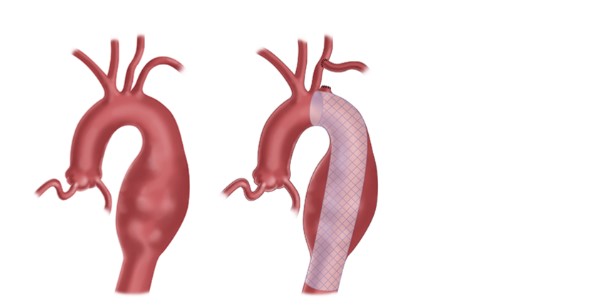
In the previous two columns, I discussed aneurysms that occur in the aorta situated in the chest cavity. In this article, I will explain the various types of treatment options available for those thoracic aortic aneurysms.
In general, outcomes favor endovascular repair over open repair as open repair is associated with higher rates of morbidity and mortality in particular. Open repair means the surgeon makes an incision the old-fashioned way and repairs the aneurysm utilizing “clamp and sew” technique. Endovascular repair means utilizing stent grafts and performing the repair under X-ray control through wire-based newer technology.
However, repeat open surgery may still be favored in certain circumstances such as if patients have thoracic aorta aneurysm secondary to a connective tissue disorder (like Marfan syndrome), patients who are otherwise young or healthy patients, and if the anatomy of the thoracic aorta is not suitable for endovascular repair. This decision will be made by the vascular surgeon.
In particular, the benefit of open repair compared to endovascular repair includes a decreased need for follow-up after the procedure and lower chances of further procedures needed. The more complex open repair may include placement on a full cardiopulmonary bypass (a machine that does the function of your heart and lungs during the operation) or just a left heart bypass or a right heart bypass.
A third approach is called a hybrid repair, in which part of the repair is done to bypass the main branches of the thoracic aorta after which the thoracic aortic aneurysm may be repaired by placing an endograft.
